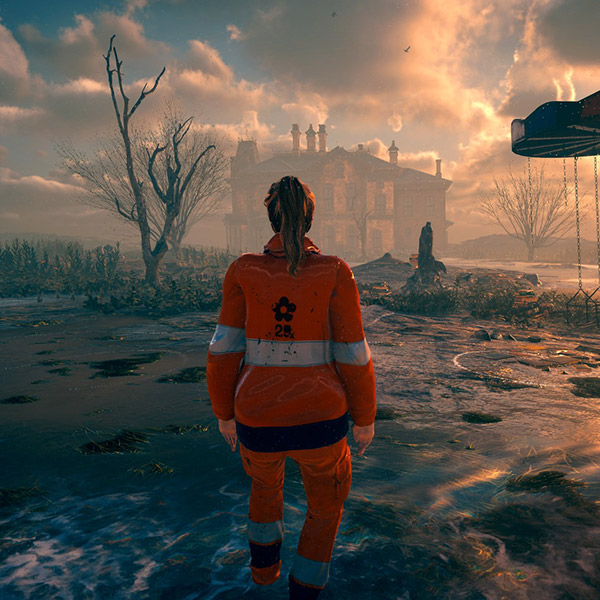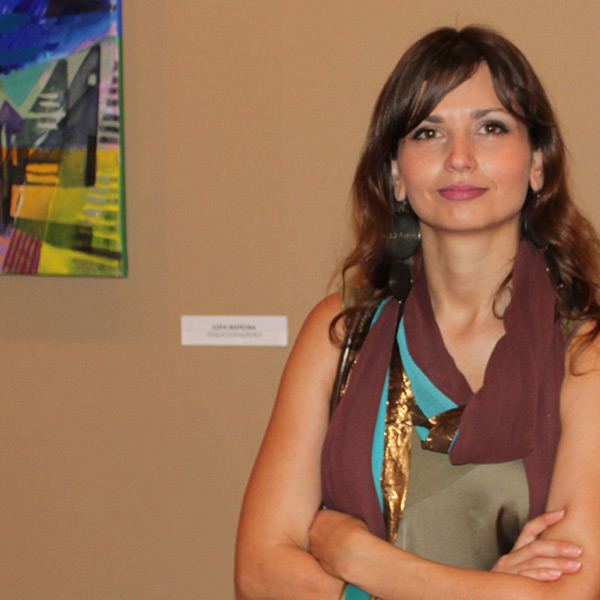Panel 11: Immersive storytelling: Participation and Playing with the Past and Presence
Chair: Mandy Rose
11.01 – Immersive Storytelling for Inclusive Innovation – UNBOXED: Creativity in the UK
Lora Markova (Loughborough University London)
This paper presents findings from a research project on creative innovation in live experiences and festivals with focus on UNBOXED: Creativity in the UK – the UK-wide programme of cross-sector creativity, that offered 10 experiments in creative technology between March and November 2022. The study explores the creative development of UNBOXED and its individual commissions in terms of transformative R&D processes, creative innovation, and audience experiences. The central research questions revolve around use of immersive storytelling and co-creative interaction in generating participatory experiences; use of emerging technologies in connecting diverse audiences and building inclusive communities; technologies of world-building and innovative production modes in creating (hybrid) festival experiences. The paper explores a selection of the UNBOXED projects that employ elements of immersive storytelling in reimagining UK societies as inclusive spaces – StoryTrails by StoryFutures uncovers untold cultural histories via remixing BFI and BBC archives into augmented reality (AR) and virtual reality (VR) immersive experiences in 15 libraries across the UK; PoliNations by Trigger Collective establishes parallels between bio-, cultural and gender diversity in a community-grown city garden and an AR app that ‘decolonizes’ physical and virtual space; the projection-mapping show About Us by 59 Productions featuring video poetry and live choir performances and the AR app and 10-km sculptural trail of the solar system Our Place in Space by Nerve Centre deconstruct Us/Them divisions by reconsidering human experiences in a cosmic context beyond socio-cultural and geopolitical boundaries; Galwad by Collective Cymru reimagines a sustainable future of radical inclusivity through transmedia storytelling and world-building techniques. Drawing upon the studied creative examples, this paper aims to explore the role of community-led and immersive storytelling in rethinking and driving solutions to societal challenges.
11.02 – The Abandoned Library
Andy Campbell and Judi Alston (Dreaming Methods)
In a future Northern England devastated by climate change, an environmental worker uncovers an abandoned library where books and technology have fused into the architecture and landscape to create new stories.
19-year-old CJ is working to salvage valuable resources from a flooded and contaminated marshland, the haunting remains of a once-thriving coastal town. The world she inhabits leaves her feeling angry and displaced. She is living through the catastrophic consequences of previous generations’ mistakes.
Taking shelter from an approaching storm, CJ ventures inside an old library, where she discovers a bizarre ‘living’ fusion of nature, language and technology. At its heart is The Librarian, a malfunctioned AI that has spent many years gathering data from its turbulent surroundings.
Affected by years of extreme temperatures and abnormal weather conditions, The Librarian is forming its own unique work of literature: a story of connectedness and hope that needs a strong and resilient protagonist.
Funded by XR Stories.
https://dreamingmethods.com/portfolio/the-abandoned-library/
11.03 – Invisible to Embodied: Understanding Immersive Preferences as Situated Player Types
Dr Judith Pintar
There is widespread agreement about the utility of personality-based player types to guide aspects of game design. A separate line of thought, originating in film theory, brought immersion and embodiment into the conversation, making player types more applicable to immersive storytelling. In this presentation, I distinguish between immersion-as-narrative-engagement from immersion-as-embodiment. These two factors operate independently– readers, listeners, and players can be immersed in a narrative but not bodily engaged, or they might achieve an immersed embodied state and care not at all for the story being told.
The model that I will present derives from the interaction of these two kinds of immersion. The typology characterizes players’ immersion-as-narrative preferences as narratively engaged, narratively disengaged, or narratively opposed. In addressing preferences related to immersion-as-embodiment, three different experiences are also identified. The model distinguishes players whose preference is to be unseen, unheard, and unnoticed, from those whose pleasure comes from being the object of attention (positive or negative). A third group of players are so unself-consciously immersed, that they neither evade nor elicit attention.
I characterize the nine resulting “immersive preferences” as “situated types” because the model does not assert them to reflect innate personality traits, but rather to be contingent on personal attributes and social conditions some of which are liable to change – from person to person, from day to day, and even in the middle of an immersive experience. Building immersive flexibility into the design of immersive storytelling (for entertainment or education, in physical settings like escape rooms, or digital settings like virtual museums, new media, interactive fiction or games) may help to make immersive experiences more comfortable, accessible, and inclusive because it welcomes readers, listeners and players (of all kinds) as they are.



